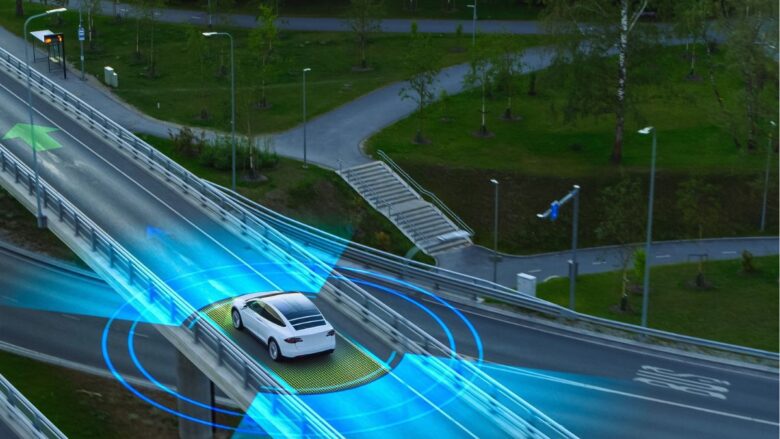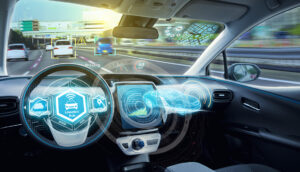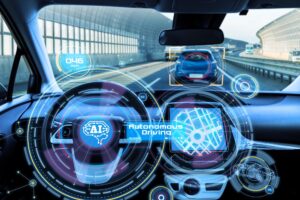Over the past decade, autonomous vehicle technology has been steadily improving, and by 2025 it will be packed with ideas that will change the way people view transportation. What was once science fiction is now a reality. From test fleets of self-driving taxis in major cities to improved driver assistance systems in regular cars, autonomous driving technology is no longer confined to the lab. These vehicles will have smarter systems, faster computers, and more intuitive artificial intelligence that can better handle real-world driving conditions. These developments make 2025 a big year for autonomous mobility.
Sensor and Perception Improvements
The improvement in sensor technology for autonomous vehicles in 2025 is a huge milestone. Recent advancements indicate that autonomous vehicles’ “eyes” and “ears” will become smaller, more affordable, and more potent. LiDAR systems now have higher resolution and can operate in various light and weather conditions. Radar sensors have improved detection range and accuracy, allowing vehicles to detect moving and stationary objects. New cameras have improved night vision and real-time image processing capabilities, allowing cars to better understand their surroundings. Improvements in perception hardware improve safety and performance in complex driving environments.
Advances in AI
By 2025, AI systems in self-driving cars will be more advanced than they are today. Deep learning from a vast library of driving scenarios can help vehicles deal with rare and unpredictable traffic situations. AI can recognize the hand gestures of pedestrians and cyclists crossing the road, as well as traffic signs and lights. More complex decision-making processes can mimic human judgment without distraction or fatigue. Improved machine learning and neural networks bring autonomous driving closer to autonomous driving.
Popularization of Vehicle-to-everything Communications
One of the most impactful technologies in 2025 will be V2X communications. Via connected devices, self-driving cars can communicate with road infrastructure, traffic management systems, and pedestrians. Cars can receive notifications that traffic lights have changed from green to red or that other vehicles have detected hazards miles ahead. This level of connectivity allows cars to make intelligent decisions and address traffic issues, improving safety and efficiency. V2X is now standard on many self-driving car platforms, especially in densely populated cities.
Integrating Quantum Computing to Solve Complex Problems
Quantum computing is making its way into the self-driving car industry, although the sector is still in its infancy. Leading developers are applying quantum algorithms to solve route planning and traffic prediction challenges that standard computers will not be able to address in 2025. These technologies can evaluate countless variables and identify ideal driving options in real time. Quantum-enhanced software can predict traffic flows, adjust vehicle routes, and reduce delays during rush hour or rapidly changing traffic conditions. Although rare, quantum computing has the potential to create smarter and more efficient self-driving systems.
Expanding Autonomous Freight and Delivery Services
By 2025, autonomous freight and last-mile delivery will have overtaken passenger transportation. Autonomous trucks are now on the roads in several countries, making deliveries faster and more efficient. Redundant safety measures, remote monitoring, and superior navigation tools enable these vehicles to reliably transport goods, groceries, and medical supplies over long distances. Urban areas are now equipped with more autonomous delivery robots and drones that can transport goods, groceries, and medical supplies without contact. The logistics industry is quickly adapting to these developments, reducing operating costs and speeding up customer service.
Stronger Regulatory Support and Global Standards
By 2025, governments around the world will have made significant progress in developing standards for self-driving cars. Many regions have established clear standards for safety testing, data usage, liability, and insurance. These laws have built public trust and spurred investment in the technology. Through international collaboration, global communication protocols, cybersecurity, and AI behavioral guidelines have been developed to allow self-driving cars to operate seamlessly across borders. Given the potential for self-driving cars to revolutionize transportation, regulatory sentiment has shifted from caution to cautious optimism.
Cybersecurity Enhances Data and System Security
Security is a top priority in 2025 due to the increasing use of software and connectivity. Multi-layered security measures protect self-driving cars from cyberattacks and data breaches. Standard features include real-time threat detection, encrypted communications, and automatic security updates. Developers are using blockchain technology to securely track events and transactions, ensuring transparency and traceability. Vehicles collect and transmit sensitive data, so strong privacy controls can ensure the safety of user data.
Progress in Urban Integration and Smart Infrastructure
By 2025, many cities will have adapted their infrastructure to accommodate self-driving cars. Today, urban areas have dedicated lanes, smart traffic lights, and sensor-enabled intersections. Automated parking systems help pick up and park cars efficiently, improving traffic flow and reducing congestion in busy areas. Urban developers are working with technology companies to optimize the use of self-driving cars. These smart infrastructure improvements will enable the use of autonomous technology in urban life.
Conclusion
By 2025, the road to autonomous transportation will reach a turning point. Smart sensors, artificial intelligence, networking, quantum computing, and human-machine interaction are changing the way cars operate and how people travel. The rise of autonomous freight and delivery services, supportive regulations, and the rise of smart infrastructure show that self-driving cars are no longer just experimental but a viable travel option. As more cities and organizations implement this technology, roads will become safer, pollution will decrease, and convenience will increase for citizens from all walks of life.
FAQs
1. What will be the biggest advancements in self-driving cars in 2025?
More powerful sensors, artificial intelligence, V2X connectivity, cybersecurity, and early quantum computers for navigation and decision-making are all important developments.
2. Will self-driving cars be commonplace in 2025?
Many cities around the world are using self-driving cars in public pilots, logistics, and ride-sharing.
3. Self-driving cars in 2025: How safe are they?
With more advanced decision-making capabilities, real-time communication, and multiple safety systems, self-driving cars are safer than ever before.
4. How will artificial intelligence impact self-driving cars?
Artificial intelligence helps cars understand their surroundings, predict the behavior of other vehicles, and make real-time decisions.
5. Will Self-Driving Cars Need Human Supervision in 2025?
Many vehicles can drive themselves in specific areas, but fully autonomous driving is still in development.




